Unless otherwise specified, the following conditions apply: VIN
= 13.5 V, TA = 25°C. shows the circuit with the appropriate BOM from .
Unless otherwise specified, the following conditions apply: VIN
= 13.5 V, TA = 25°C. shows the circuit with the appropriate BOM from .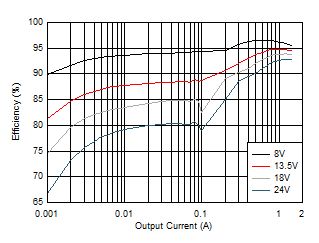
| LM63610 |
VOUT = 5
V |
ƒSW = 400 kHz
(AUTO) |
Figure 9-5 Efficiency. Unless otherwise specified, the following conditions apply: VIN
= 13.5 V, TA = 25°C. shows the circuit with the appropriate BOM from . 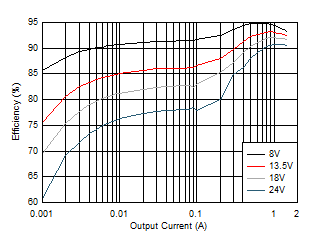
| LM63610 |
VOUT = 3.3
V |
ƒSW = 400 kHz
(AUTO) |
Figure 9-7 Efficiency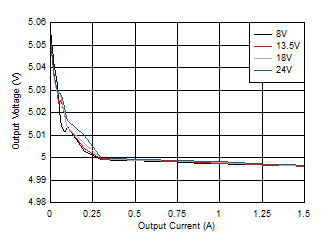
| LM63610 | VOUT = 5 V | ƒSW = 2100 kHz (AUTO) |
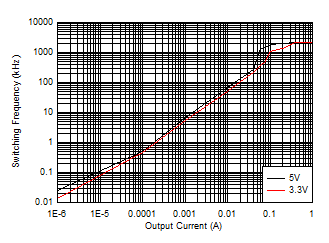
| LM63610 |
VIN = 13.5
V |
ƒSW = 2100 kHz
(AUTO) |
Figure 9-11 Switching Frequency versus Output Current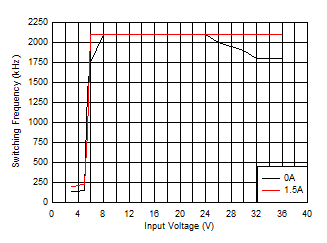
| LM63610 |
VOUT = 5
V |
ƒSW = 2100 kHz
(FPWM) |
Figure 9-13 Switching Frequency versus Input Voltage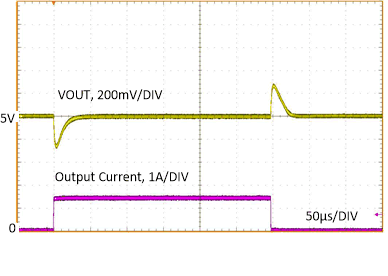
| LM63610 |
VOUT
= 5 V |
ƒSW
= 2100 kHz |
| 0 A to 1.5 A, 2µs |
FPWM |
|
Figure 9-15 Load
Transient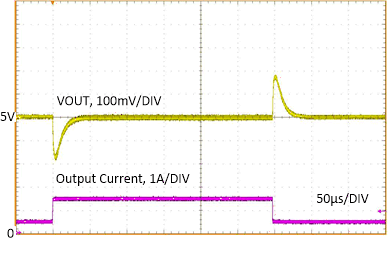
| LM63610 |
VOUT
= 5 V |
ƒSW
= 2100 kHz |
| 0.5 A to 1.5 A, 2µs |
AUTO |
|
Figure 9-17 Load
Transient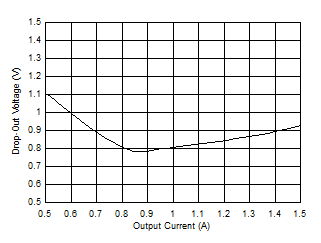
|
LM63610 |
ƒSW
= 1850 kHz (AUTO) |
Figure 9-19 Dropout Voltage versus Output Current to 1.85 MHz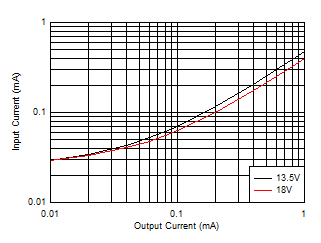
| LM63610 |
VOUT = 5
V |
ƒSW = 2100 kHz
(AUTO) |
Figure 9-21 Input
Supply Current versus Output Current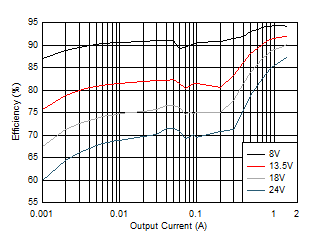
| LM63610 |
VOUT = 5
V |
ƒSW = 2100 kHz
(AUTO) |
Figure 9-6 Efficiency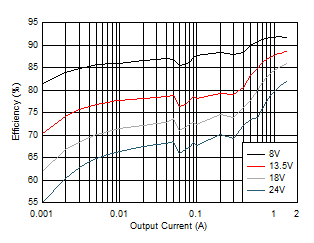
| LM63610 |
VOUT = 3.3
V |
ƒSW = 2100 kHz
(AUTO) |
Figure 9-8 Efficiency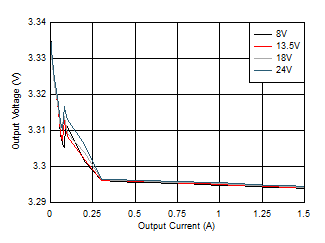
| LM63610 | VOUT = 3.3 V | ƒSW = 2100 kHz (AUTO) |
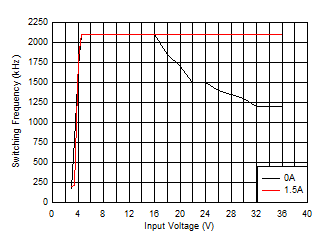
| LM63610 |
VOUT = 3.3
V |
ƒSW = 2100 kHz
(FPWM) |
Figure 9-12 Switching Frequency versus Input Voltage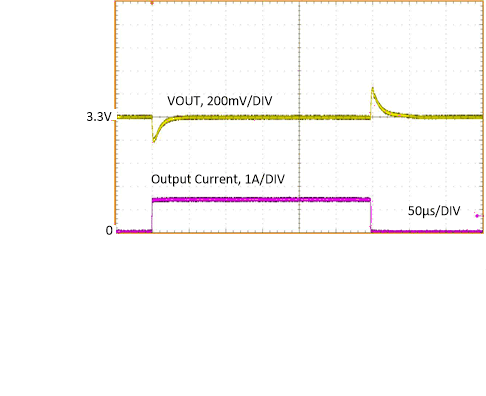
| LM63610 |
VOUT
= 3.3 V |
ƒSW
= 2100 kHz |
| 0 A to 1.5 A, 2µs |
FPWM |
|
Figure 9-14 Load
Transient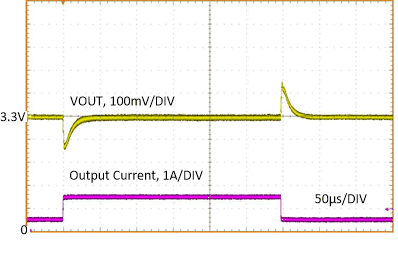
| LM63610 |
VOUT
= 3.3 V |
ƒSW
= 2100 kHz |
| 0.5 A to 1.5 A, 2µs |
AUTO |
|
Figure 9-16 Load
Transient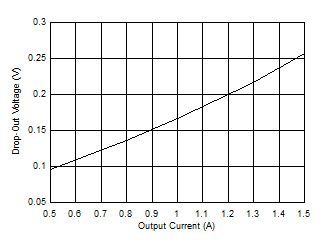
|
LM63610 |
ƒSW
= 140 kHz (AUTO) |
Figure 9-18 Dropout Voltage versus Output Current for -1% Drop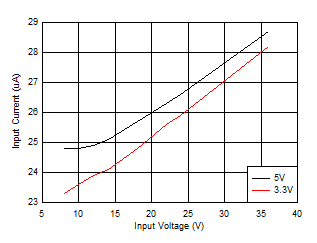
| LM63610 |
IOUT = 0
A |
ƒSW = 2100 kHz
(AUTO) |
Figure 9-20 Input
Supply Current versus Input Voltage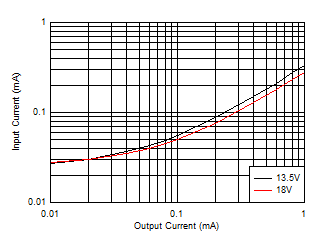
| LM63610 |
VOUT = 3.3
V |
ƒSW = 2100 kHz
(AUTO) |
Figure 9-22 Input
Supply Current versus Output CurrentTable 9-3 BOM for Typical Application
Curves
| VOUT(1) |
FREQUENCY |
OUTPUT CURRENT |
COUT |
L |
U1 |
| 3.3 V |
400 kHz |
1 A |
2 × 22 µF |
10 µH, 40 mΩ |
LM63610 |
| 3.3 V |
2100 kHz |
1 A |
1 × 10 µF |
4.7 µH, 30 mΩ |
LM63610 |
| 5 V |
400 kHz |
1 A |
2 × 22 µF |
10 µH, 40 mΩ |
LM63610 |
| 5 V |
2100 kHz |
1 A |
1 × 10 µF |
4.7 µH, 30 mΩ |
LM63610 |
(1) The values in this table were
selected to enhance certain performance criteria and may not represent typical
values.



















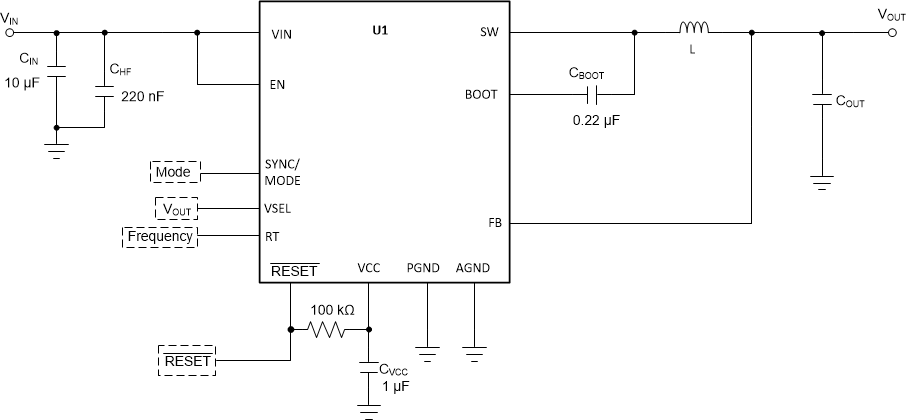 Figure 9-23 Circuit
for Typical Application Curves
Figure 9-23 Circuit
for Typical Application Curves